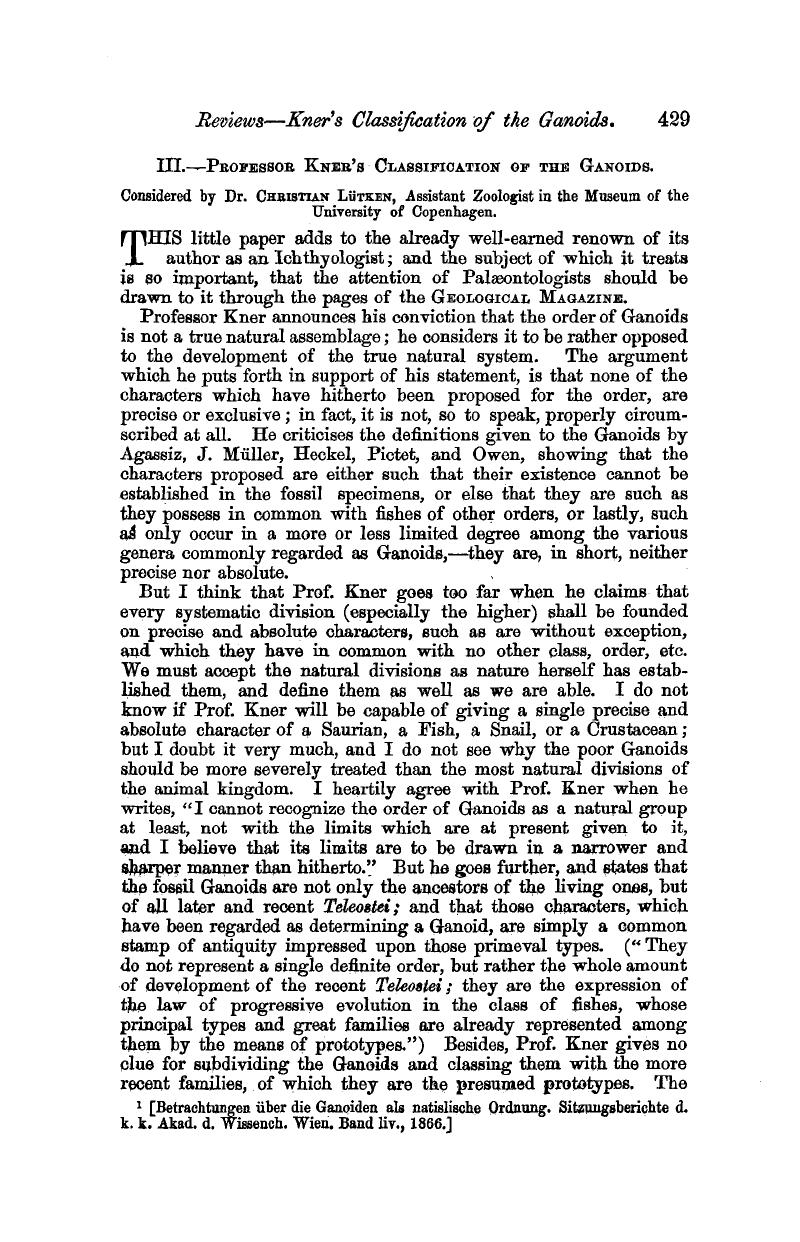No CrossRef data available.
Article contents
III.—Professor Kner's Classification of the Ganoids.
Published online by Cambridge University Press: 01 May 2009
Abstract

- Type
- Reviews
- Information
- Copyright
- Copyright © Cambridge University Press 1868
References
page 429 note 1 [Betrachtungen über die Ganoiden als natislische Ordnung. Sitzungaberichte d. k. k.Akad. d. Wissench. Wien. Band liv., 1866.]Google Scholar
page 430 note 1 Professor Young's discovery of the “jugular plates” of this genus, has made its poistion somewhat doubtful.
page 431 note 1 In Aspidorhynchus, where they are generally thought to be wanting, they are nevertheless figured and described by Pictet.
page 431 note 2 A single species from Lebanon, Palæobalistum Gœdelii.
page 431 note 3 Strange to say, the ingenious “preliminary essay” of this excellent author is far less known among continental palæontologists than it ought to be. No other work since the time of Agassiz's “Recherches” has advanced the progress of Palæichthylogy so much as this admirable book. Will the author forgive my suggesting the slight modification of his arrangement expressed in the terms “Rhombodipterini” and “Cyclodipterini” ? or my intimating that Gyroptychius should apparently be removed to the cycloid division of the Dipterini?
page 431 note 4 “Uronemus lobatus,” Ag. and Cælacanthus Münsteri (Permian?) are said to be related to Phaneropleuron.
page 431 note 5 To the genera enumerated and discussed by Prof. Huxley in his recent monograph of Cælacanthini, that I have just now been fortunate enough to procure, should be added the Triassic Graphiurus of Kner, who will give us some information on the Hoplopygus of Agassiz, that appears also to belong to this family (or of the Gyrosteus, said to be related to Chondrosteus, Eg.). Descriptions of several species of Undina that hare escaped the attentive care of Prof. Huxley will be found in Wagner's and Throlliere's descriptions of the fishes of the lithographic slates of Bavaria and France.
page 432 note 1 This singular family is noticed in Pictet and Humbert's “Poissons fossiles du Liban.” It is very characteristic of the Cretaceous period. I would nevertheless propose to unite with it the Triassic genera Belonorhynchus and Iehthyorhynchus, the oldest known (not Ganoidean) Teleostei.


